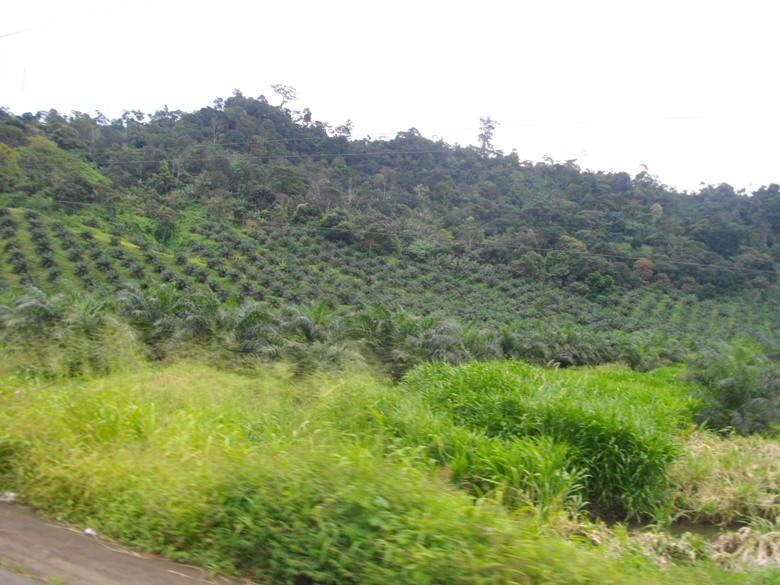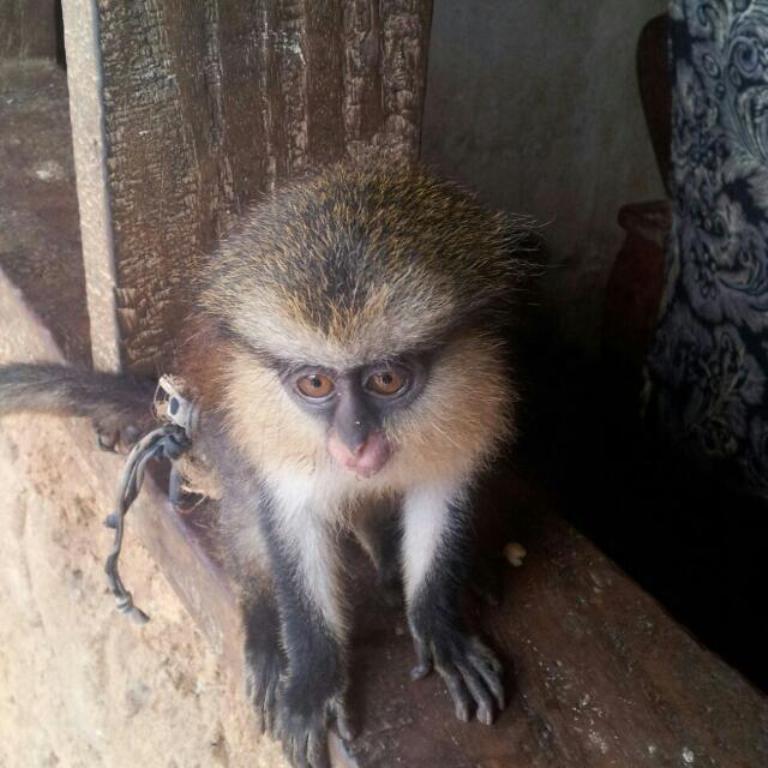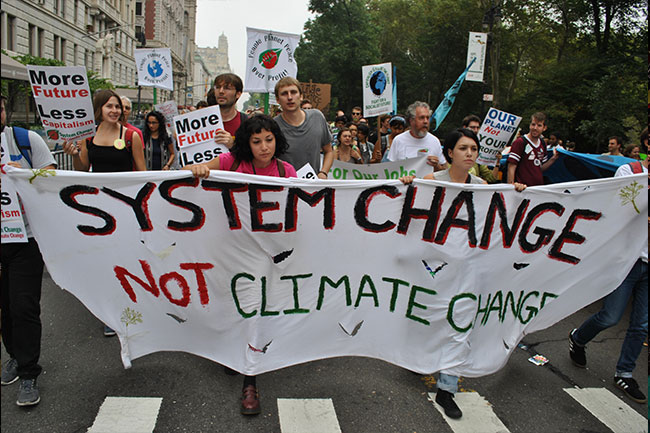
By Elias Ntungwe Ngalame
A programme to empower local communities manage their forest is helping Cameroon government improve forest governance and management amidst challenges.
Cameroon has been active in REDD+ process (reducing emissions from deforestation and forest degradation) and carbon sequestration) with the country’s readiness preparation proposal approved by the World Bank in 2013.
However, government says adequate consultation and participation of forest residents in the planning and execution process was necessary for effective REDD+ participation and reaping of benefits.
“We need to build on existing forest governance and clarify the legal framework for REDD+, engage rural and indigenous communities, and ensure transparency and communication for all to reap the benefits from our resources,” said the minister of forestry and wildlife Philip Ngole Ngwese at ceremony to receive New Year wishes from collaborators in January 2017.
The Mount Cameroon Forest is one of the community forests with an established management agreement between the community and the state with the Mount Cameroon Project as coordinator.
The project stretches through 11 villages with a heterogeneous population of 122.900 inhabitants, from the slopes of the mountain to the Atlantic Ocean, generating substantial income for many families and contributing to poverty reduction, officials say.
Created in 1998 following Cameroon’s 1994 forestry law that decentralized forest management, the Bimbia- Bondikombo Community Forest stretch for example is a success story, officials say, despite numerous challenges that need to be addressed.
The forest constitute mangrove at sea level, evergreen lowland forest, the sub-mountain and mountain forest and the savanna above 2000m. The mountain slope presents clear evidence of active volcanism like lava flow of recent eruption [1999 and 2000] crater lakes, caves and waterfalls. The Forests are rich in podocarpus and bamboo, Prunus Africana and contain unique flora and fauna.
The forests in the Mount Cameroon area hold great cultural significance for the local people and play a crucial role in regulating water supplies, the project officials say.
Bimbia through Bonadikombo is one of the rare communities that rely solely on its community water supply project and not the state owned Water Corporation, thanks to its constant water supply from the Mount Cameroon forest.
Fuelwood and building materials are collected from the forest with products like honey which is of great importance in many herbal remedies, the residents attest. “We harvest honey from the mountain forest and market it through our cooperative. Carving is also a major income source, with products exported internationally,” says Henry Njombe a resident in Bokwango in the forest area.

A Forest of all seasons
The bio-diversity of the Mount Cameroon forests will appeal to anyone who loves nature. With year round interest and a beautiful setting, the forest gives an intimate feel that makes visitors feel like friends. In the rich forest, a cushion of leaves sits, perched neatly atop cross-cutting branches pulled in place by the creature that built the nest.
Further inside, a stream of cold water rushes through stones coated in lush moss and bird droppings. The sun’s rays pierce through the forest canopy with bright spots dotted here and there like a dancing floor in a night club as I move along to get abreast with the marvels of nature.
As sounds of birds herald the arrival of midday in the distance, Charles Mokwe a mountain guide volunteer who accompanied me through the Mt Cameroon forest and National park, pointed at the tree with the nest.
“This should be the nest of some animal but I cannot tell whether it is a chimpanzee or monkey or whether it is recent. Even with increasing human encroachment, there are still some wildlife in the forest here protected by the National Park project though not the big species of animals we use to see in the past,” Charles said, clearly excited by the discovery of animal nest not so deep in the mountain forest – a place he said was once a biodiversity hot spot, but is now threatened by the expansion of farmland, agro-industrial palm oil plantations, grazing fields, bushfires and the trappings of other encroaching development activities.
Like most forest areas in Cameroon, the rich forest and wildlife species along the flanks of Mt Cameroon are seriously under threat by encroaching human activities and climate change, necessitating constant tree regeneration activities and tightened animal conservation.
This explains why the conservation of trees by Mount Cameroon project is focused on the regeneration of threatened trees and the reforestation of degraded landscapes. Some 30,000 capacity tree nursery containing threatened tree species are nursed and planted back into degraded forest in the area annually to ensure conservation sustainability, the project officials explained.
“ Assisted by the local communities we do annual tree planting in the project area,’’ says Louis Nkembi CEO of Environment and Rural Development Foundation, ERUDEF an NGO working in the Mt Cameroon forest area.
He regrets that the wild chimps and elephants are no longer there due to excessive human activity.
“Wild chimps and elephants that used to be the pride of the Mount Cameroon forest are no longer there. We can

only find them now at the Limbe wildlife conservation center,’’ Louis Nkembi said. The project also includes wildlife conservation at the Limbe Zoo and a Botanic Garden with endemic plant species.
Challenges
The Cameroon community forest project government says, is facing various challenges. Key amongst them is insecurity especially at frontier zones that have remained disturbing phenomena to the peaceful co-existence of the habitat and biodiversity of the different forest areas and national parks.
“Our forest is constantly being invaded by illegal poachers and criminals reason why we are reinforcing security around major national parks,” said the minister of forestry and wildlife Philip Ngole Ngwesse while on visit to the Bouba Ndjidda National Park at the beginning of 2015 according to newspaper report. He said over 700 ecoguards have been deployed in the different protected forest areas in the country since the massacre of hundreds of elephants at the Bouba Njidda national park in 2012.
A report Cameroon elephant slaughter | WWF noted that between January and March of 2012, heavily-armed foreign poachers invaded Cameroon and killed over 300 elephants in Bouba N’Djida National Park. Since the incident, which drew worldwide media attention, Cameroon has moved to bolster security in its protected areas.
The exploitation of local communities by land grabbers is another disturbing phenomenon environment experts say. Critics say that lack of proper consultation and weak legal processes leave local communities displaced and impoverished, while the environmental and economic effects have been devastating.
“Agro-industries in complicity with government officials have acquired land adjacent many community forests for their palm plantations and illegal logging in these areas are going on without the consent of the forest dwellers, making the community forest management programme highly controversial,’’ says Samuel Nguiffo of Center for Environment and Development, CED an NGO in Cameroon.
Local opponents have accused these invading agro-industrial companies of corruption, using donations of goods and services to garner support from the government and some elite. Civil society organizations and human right groups have challenged claims of environmental sustainability by these agro-industries.
“Talk about environmental sustainability by agro-industries and other forest land grabbers is only on paper. On the ground forest community dwellers are relocated without their consent,’’ says Augustin Njamshi, head of Bio-resources Development and Conservation Programme-Cameroon [BDCP] an NGO in Cameroon.
Critics say that lack of proper consultation and weak legal processes leave local communities displaced and impoverished, while the environmental effects have been devastating. “In the classification of forest in Cameroon, the rights of the forest inhabitants are not respected,” says Jean Calvin of Cameroon Ecology, a nongovernmental organisation.
The community members are not entitled to own or transfer the land, nor to veto potential investors, Calvin explained. This allows businesses to take forest land from its inhabitants.
“We have been forced to move from our forest habitat to other villages where we have difficulties earning any income,” lamented Monono Martin, head of the Moliwe village community in the Southwest. “There are no animals to hunt, our medicinal plants from the forest have all been destroyed,” he said.
Environmental experts are critical of the government’s welcoming attitude towards land investors and the increasing displacement of forest communities. “Land grabbing by heavy investors has caused rapid disappearance of resources, triggering massive movement of the population from resource-depleted zones to other areas where resources are available, causing conflict between communities,” said Andy White of the Rights and Resources Initiative (RRI), an international NGO in a press report during a visit in Cameroon in 2013.
“Many women are unable to freely access and control productive resources and this places them in a weaker position in terms of agricultural productivity and economic growth, food security, family income and equal participation in governance,” says Benard Njonga a Cameroonian agronomist who works to promote the interests of local smallholder farmers
Only two kilometres from Korup National Park in the Southwest , for example, the community forest gives way to an industrial logging concession. The Moabi trees found there is particularly favoured by loggers for its hard, dark wood and high market price have all been ferried away.
The Moabi’s fruit that used to be a key component of the subsistence of the women in the local community, especially for the rich oil pressed from the nut have all disappeared. The women relied upon it for their survival.
A few years back it was harvested by women from Farbe village in a forest grove 12km from the village, in the middle of the logging concession.

But those trees are now gone, cut down between 2009-2013 and exported to Europe to make garden furniture and coffee tables. The people around the Korup National Park are poorer, hungrier as a result of European tastes for luxury.
“The future of these communities are at stake as their forest is stripped of trees,’’ say Sameul Nguiffo of CED.
A new global study, http://www.rightsandresources.org/who-owns-the-worlds-land-a-global-baseline-of-indigenous-and-community-land-rights/ released on September 30th on the eve of a major land rights summit, reveals that indigenous peoples and local communities lack legal rights to almost three quarters of their traditional lands, despite claiming or having customary use of up to 65 percent of the world’s land area.
Pointing to their findings as evidence of the significant disenfranchisement of one of the most basic of human rights, the authors report that failure to recognize land tenure for 1.5 billion people worldwide is hampering efforts to combat hunger and poverty, igniting social conflict, and undermining efforts to reduce deforestation and the impacts of climate change.
‘Greed and Power’
Experts say what communities on ground in Cameroon see is no different from what is unfolding in other neighbouring countries in West and Central Africa attributing the forest land gabbing conflict to greed and power.
“The slow pace of good intentions—the efforts to protect communities of forest dwellers and subsistence farmers who have no wealth except for the land that they cultivate—has been overtaken by greed and power,” says Samuel Nguiffo
He says so much human tragedy could be averted if land rights in many African countries didn’t erode so soon after they are established calling on the Cameroon government to speed up reform process to protect community forest.
“We know there has been a surge of new laws and reform processes recently,” added Samuel Nguiffo, “but these efforts are too slow and do not meet the challenges presented by rapid development and exploitation in the extractive sector. Cameroonians will not sit by and watch their future handed over to the highest bidder.”
(This article has been produced under the aegis of the CSE Media Fellowship Programme)












